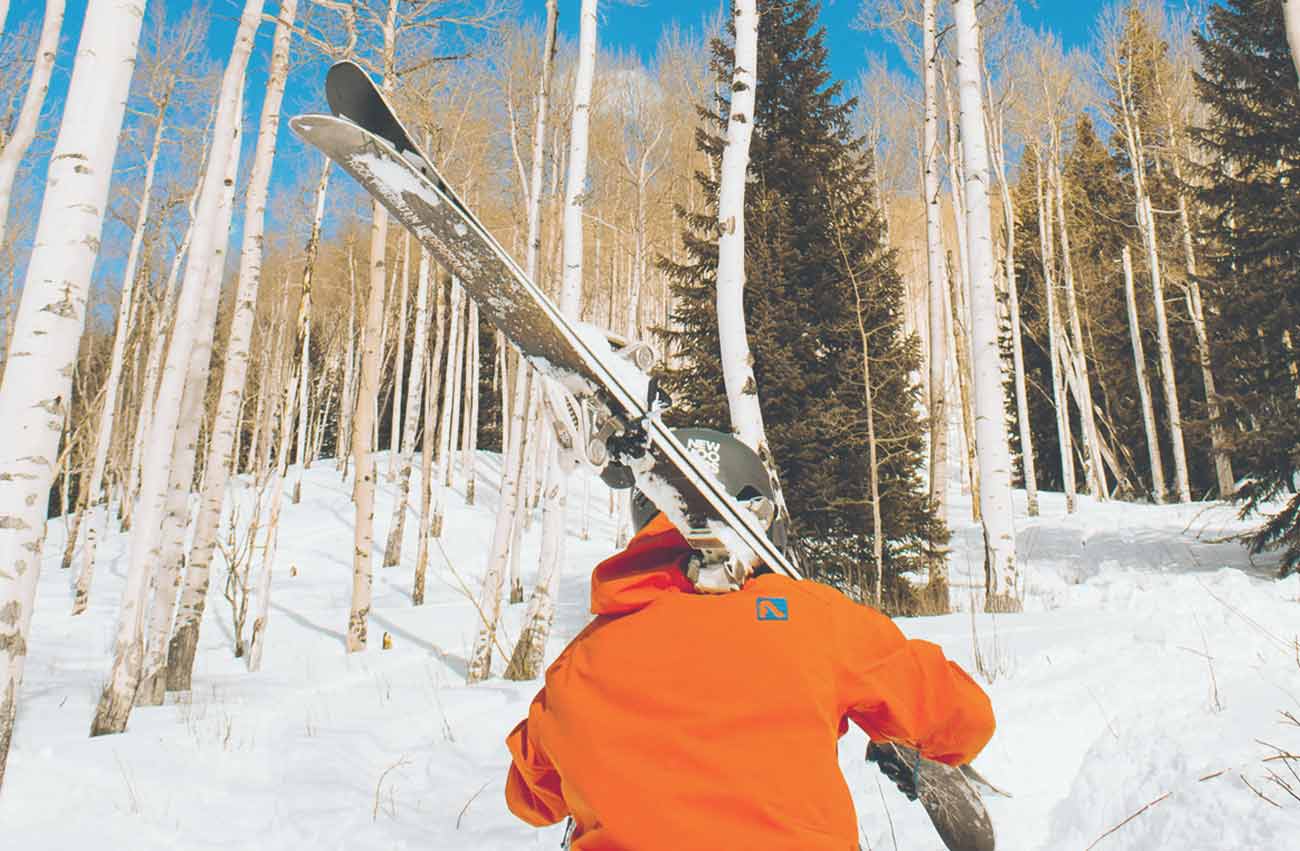Essential Skiing Tips For Beginners & Novices
Perhaps skiing for the first time can be extremely frustrating. In fact, when all skiers are just getting started, their legs shake and they try not to lose their balance. Let’s face it: For beginners, there is no hidden secret to skiing, the goal is just to do it. Whether you’re on the slopes for the first time or dusting off your skis for the first time in years, these tips for beginner skiers will help you get up and fly down the slopes in no time!
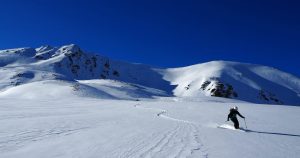
Skiing for Beginners
Wear warm and waterproof clothing
The challenge can also begin with your choice of clothes! It is incredibly important to put thick, waterproof outerwear (trousers and coats) under your coats, as well as thermal base layers and wool socks. The outerwear keeps water and snow out, while the thermal layer will wick away sweat, keeping you extra warm.
Thermal wear comes in lots of fabrics and varieties, but there is no better sweat-wicking cloth than Merino wool. Warm and dry yet lightweight and cozy, Merino wool base layers are the perfect pair for thick outerwear.
Use goggles and a helmet
It’s not just your clothes that suffice, but also goggles and helmets for safety and protection. Goggles help protect you from flying snow, which can be a problem, especially on snowy days or when it snows. In addition, many sets of ski goggles are also UV resistant and protect your eyes from the harsh rays of the sun. Additionally, a helmet is an important piece of gear to wear on the slopes. While you can purchase your own helmet, many ski resorts do have them for rent along with their other gear. Be sure to do your own research to make sure you have a helmet available!
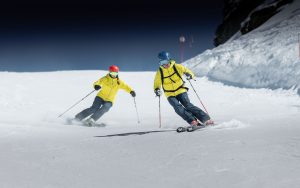
Beginners, choose a ski resort that suits you
While most ski resorts have options for beginners, it’s clear that not all are created equal when it comes to first-time skiers. You can find ski resorts suitable for beginners almost all over the world. A ski resort has many special features that can contribute to a good learning environment for less experienced skiers. While not comprehensive, a ski resort suitable for beginners will have the following features as a minimum:
- Gear rentals
- Ski lessons (group or private)
- Bunny hills and beginner-friendly “green” trails
More on each of these later, but for now, you can start your research with these items in mind to choose a destination that accommodates first-time skiers.
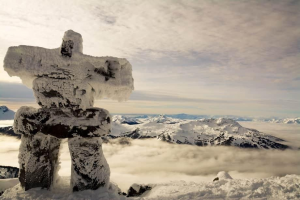
Rent your larger gear
You may want to invest a ton of money in your own skis and boots, but we recommend holding off until you have some experience under your belt. Carrying ski equipment is not only incredibly difficult, but also very expensive. Instead of buying skis, you can usually rent them from any ski resort for a reasonable fee. Rentals allow you to gain insight into skis and get fitness advice from an expert. Basically the staff at every ski resort can take your measurements and make sure you’re fully equipped for your first time out in the snow. When you’re more experienced, you might consider buying your own skis, but the first few times we recommend saving yourself some money and renting everything.
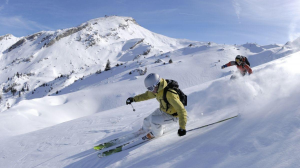
Take an introductory lesson
Taking group or individual ski lessons is a great way to learn the basics of skiing in a supportive and hands-on way. The ski instructors are trained to give absolute beginners training and will help you learn the moves and techniques needed to become a more experienced skier. Fortunately, most ski resorts offer lessons ranging from first-time skiers to advanced. If you’ve never skied before or it’s been a few years, group lessons are a great and affordable way to learn the ropes.
We recommend applying to resorts that offer several different grade levels and separate adults and children in group lessons. If you have a few days at the facility, it’s also a good idea to take a few classes to hone your skills and get expert help with your technique.
Don’t give up
Whatever you do, don’t give up on skiing until you’ve given it a fair shot. Everyone falls while they are learning and there may well be times that you question whether all the effort is worth it.
Indeed, having to deal with everything can sometimes make seasoned skiers wish they were on a beach lying in the sun. Once you get through the learning curve though, you’ll be rewarded with exhilarating experiences for the rest of your life and will enjoy the best sport on earth.
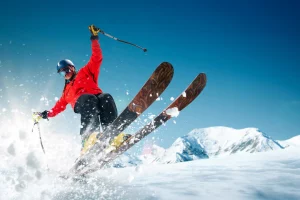
Know how to read skı symbols
Knowing the difficulty of runs on the mountain makes a huge difference. You don’t want to accidentally bomb down a black diamond before you’re extremely comfortable on the snow. When you’re learning how to ski, stick to green and blue runs to build up your skillset and confidence. I’ve put together this handy infographic that breaks down the different symbols:
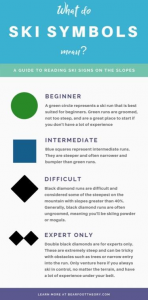
Do not carry backpack
Backpacks are a distraction on the chairlift, and if you’re already nervous, a backpack can only keep you from getting on. If you have extra snacks or anything else you want handy, grab a locker to store your stuff. If you’re thirsty, stop at any cafeteria or camp on the mountain instead of lugging around a water bottle all day.
Go Slow, Have Patience
As with anything, learning to ski takes time. Only the most incredible athletes will be able to move from a “green” (beginner) to a “blue” (intermediate) run in one day, and even then there will be some hiccups along the way. Having unreasonable expectations of your abilities will get you extremely frustrated and leave you wanting to do the “walk-of-shame” down the run. If this happens, take a deep breath, focus on what you know, make it to the base area, and grab a cocktail. Once there, talk with your instructor about what you are doing wrong and what your goals are for the day/week/month/year. Eventually, you’ll get there if you just have a little patience.
Don’t Be Afraid to Fall
To some, this might sound like a stupid statement. But think about it: As a beginner, you won’t (or shouldn’t) be going too fast, snow is softer than you’d expect, and falling is a part of learning. You’ll fall. A lot. The only way to learn is to fall and just because you’re skiing shouldn’t make it scary. There are some ways to fall that you can try if it helps: Try to fall to your side versus forwards or backwards, which might make you twist something. If you fall, self-arrest yourself so that you don’t slide down the slope and either run into or over something. And of course, just get back up and try again.



